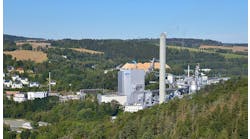By Walt Boyes and Nancy Bartels
Simulation and modeling of processes had their birth forty-odd years ago in refineries. Using simple, low-fidelity models, refineries could, in some cases, improve their outputs, profit margins and life cycles by 50% or more. Now this technique has branched out into pharmaceuticals, life sciences, specialty chemicals and other batch and hybrid process environments. Why? Because fake mistakes cost less than real ones.
The savings come from the ability to develop better processes quicker, improve safety and deliver a better, more efficient training experience.
“To be able to model something so you can look at the model and make a prediction on what a small change in that model will be, is an incredible time-saver. If you make your model correctly, then you can predict how things are going to change, going from a two-liter bioreactor to a twenty-liter unit to a 2,000-liter bioreactor. We can affect not only the manufacturing area, but also the product development area and cut the time to market,” said Trish Benton, a life-sciences consultant.
She is working with Terry Blevins of Emerson Process Management and Scott Broadley, president of measurement and control manufacturer Broadley-James Co., on a partnership to develop advances in simulating and modeling bioreactor processes. We interviewed the three at the Emerson Exchange 2007 user group meeting last month. (To hear the complete interview click here).
Blevins noted that simulation and modeling tools are at the heart of Emerson’s efforts to incorporate the Process Analytical Technology (PAT) Initiative into its product offerings. While the PAT Initiative originated in the pharmaceutical manufacturing industry, it is quickly filtering out across all the process industries, including refining and specialty chemicals.
The ability to integrate the simulation tool set with the control system is one of the factors pushing simulation out of the refineries and into the rest of the process industries.
Steering the Process in Real Time
“That’s what we’re trying to do,” says Broadley. “We’re trying to integrate this modeling capability with our bioreactor control package called ‘BioNet’ that is used for large-scale process development and doing lots of runs and variations on runs to find out what is the optimum pH, dissolved oxygen and other conditions under which these cells are to propagate. With a predictive model, we can do a number of what-if scenarios which might guide you right off the bat into the proper avenue to run down without blundering into blind alleys. But even beyond that, with the predictive control tools that Emerson is using with these models, we believe we will be able to do inline corrections, looking at the model and deducing the direction that the process is taking.”
Breathtaking stuff. And biotech isn’t the only industry where this type of “model-to-control system” interfacing is going on.
We also interviewed Blevins with another set of partners. This time, Bob Wojewodka and Philippe Moro from Lubrizol Company joined Blevins (To hear the complete interview click here). Lubrizol makes extensive use of offline simulation and modeling techniques, but what Wojewodka wants to do is integrate the large amount of offline analytical information developed from history and from their models directly into the control system.
“What we’re doing,” Wojewodka said, “is looking at batch processing specifically. Batch processing has been around for centuries, but it hasn’t been well-studied, mainly because of complexity with data and the integration of that data and the analysis of that data into the batch context, and all the ramifications around that…especially in an online and real-time mode.”
Wojewodka wants to take the analysis down to the process dynamics level. “We’re going to actually look at process dynamics,” he continued, “Process information, coupled with business data, coupled with analytical data in such a form that we can look at relationships between process and outputs—outputs being product quality, product uniformity, economic parameters…but especially in an online mode.”
Engineers and Designers
Many simulation software packages have the ability to tie into engineering and design software suites directly to create other efficiencies for process industries.
TransAlta, operator of Suncor’s Poplar Creek cogeneration facility in Ft. McMurray, Alberta, found that there was a problem with one of its boilers, and using Honeywell’s UniSim simulation software, its engineers discovered they could solve the problem by engineering in a second control valve.
Barry Hu, automation and process engineer at bioprocessing company Genencor International’s Cedar Rapids, Iowa, facility, says his company first bought MiMiC simulation software from Mynah Technologies for help doing the company’s roll-over from a Rosemount RS 3 system to DeltaV.
“We needed to redo all the programming for that,” said Hu. “That is such a complicated process. We wanted to make sure everything was running correctly in DeltaV before conversion. The linkage between the batch platform and the control hardware was really tricky. The simulation enabled me to avoid a lot of problems there. It was a debugging tool to make sure all the sequences were set up correctly. We were able to simulate the entire environment on a single computer. We were expecting some major disaster when we rolled over. We thought we’d lose three batches in rollover and we lost none. There were no major surprises. We had record production after the conversion.”
Hu also depends on MiMiC to debug programs. “We are batch process, which is sequence-intensive. We put the process online and simulate it to make sure instruments are doing the right thing at the right time.”
Training and Graying
Training is another territory simulation software is staking out in process operations. When more and more trained and experienced workers walk out the door with their retirement packages, new workers without that valuable institutional history and experience need to be brought up to speed quickly.
“Simulation allows us to keep our training current,” says Larry Fedorek, Project Manager for TransAlta. “In this industry, there are always a lot of enhancements and ongoing upgrades and changes to our operating systems.”
To keep up his employees up to speed with these changes Fedorek depends on simulation software. “The essence is to make things as efficient as possible and squeeze every ounce of energy from all our fuels. In order to maintain a high level of expertise within our operations group, we must be committed to keeping [employees] up to date on our system changes. This inherently allows us a better degree of safety from all aspects as well.”
Training new workers is key, says Fedorek. “We mainly use training simulations for new operators. They go through rigorous sessions to ensure they are ready for all situations before even heading into the Main Control Room (MCR).”
Mike Hutchen, TransAlta’s training manager puts it bluntly, “There are a limited number of operating procedures that you can practice in real time. Practicing for an event or an upset to occur,” he says, “is not possible without actually experiencing the event, and we struggled with finding a way to develop people skills for it.”
Fedorek says that running simulations improves operator effectiveness just as Hutchen requires. “If the simulator or simulation is done well, and the instructor gets the student ‘in the zone,’ there is no difference between the simulation and the live system,” Fedorek says. “The instructor runs through almost every possible scenario and upset condition. The operator is much better prepared than learning ‘on the job,’ and this also results in better safety and reliability stats.”
Genencor also uses simulation for training. “It’s a high-fidelity simulation,” says Hu. “For the operator, it looks like the real thing. Basically we use it when we roll over the system. [We have people] learning the real process on old system and the simulated process on new system. It allows people to get familiar with it.
The Downside
For all their benefits, simulators have a downside. For one thing, getting full benefit from them takes time. “We continue to use the simulation if it is something really major, but not as frequently as I would like,” Hu says. “It takes a lot of time to implement the simulation, and sometimes we simply don’t have the time to do it. It took a good month or two to setup for our DeltaV rollover. It depends of the degree of sophistication, too. As far as verifying sequence goes, you don’t need too realistic a setting.”
Some simulators provide the ability to get feedback, but that takes time too. “One thing about the MiMiC software is the simulator feedback. There’s no I/O attached, so we simulate the field response. For 1000 I/O points, it would take a week to set up,” says Hu.
“Understand that it is not just hardware/software. It takes a lot of resources to implement. You need a big buy-in from management. The simulator is just a tool. You will take a while to get there for good results.”
Simulator Perfect
A way to save some of that time would go a long way toward making “simulator perfect” for Hu. He’d like, “a way that I wouldn’t have to program in the dynamics. Those responses have to be put in. It was relatively easy for me because I had the data. I would say that I’d like a simulator that was smart enough to know the basic thermo and fluid dynamics so that they wouldn’t have to be programmed in.”
Larry Fedorek is also looking for “simulator perfect.” “To me,” he says, “simulator perfect means an operator cannot tell the difference and that includes the actual room he is training or working in.”
While we’re a ways from “simulator perfect” yet, the rewards gained by Lubrizol, TransAlta, Genencor and other companies would seem to indicate that simulators must be worth the hard work.
“Do not sell short the value,” says TransAlta’s Fedorek. “Put in the time to develop a useable and user-friendly system. The initial time commitment required by the owners’ team, in order for the simulation team to do a good job needs to be recognized up front.”
Barry Hu also sees the value and the work involved. “You will take a while to get there for good results. It takes a bit to learn. I can do the low-level stuff pretty easily now. But with hi-fi simulation, we’re not just talking about programming anymore. You need engineering help. You need to understand the dynamics of your process to make the simulation work”
The Kids Get It
In the past few years, training in the use of simulators has become ubiquitous in chemical engineering schools and has permeated the chemical engineering profession. Students are taught the use of simulation software such as HYSYS from Aspen Technology. At Rowan University, in New Jersey, for example, according to a paper “Process Simulators in the ChE Curriculum”, “we introduce process simulators in the freshmen year and use them as a teaching aid in several courses throughout the curriculum.”
Based on the standard chemical engineering process flow diagram, simulators can be used to model widely varying processes. In fact, at Rowan University, freshman ChemE students have modeled the human lung and used HYSYS to reverse-engineer everything from common chemical processes to those found in automatic coffee makers.
When these students move to real plants, they will find that simulators are regularly used for loop tuning, operator training, advanced process control and process optimization.




